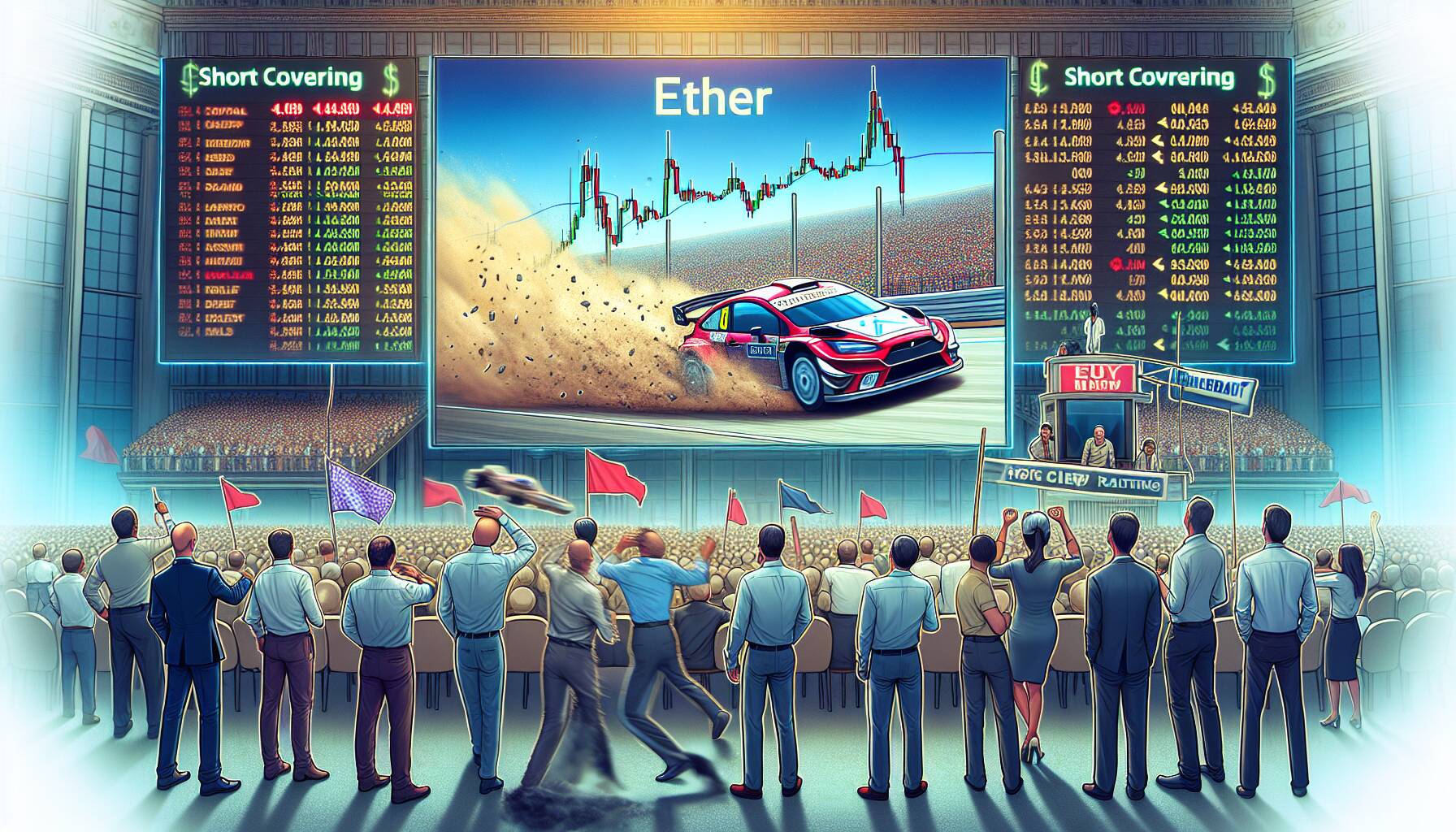The recent surge in Ether’s price, which has soared nearly 90% to surpass $2,600 since a significant sell-off in early April, may not be as robust as it seems. According to industry experts, this impressive rally is primarily attributed to short covering rather than a new wave of bullish investment. Sui Chung, the CEO of CF Benchmarks, highlights that instead of fresh buying, traders are unwinding bearish positions, leading to increased demand that temporarily pushes Ether’s price higher.
Chung explained that when traders who had previously sold futures contracts start to buy them back, it creates upward pressure on the market. This activity is particularly evident in the derivatives space managed by the Chicago Mercantile Exchange (CME), which is favored by institutional investors. An important indicator of the health of this market is the CME futures premium, or “basis,” which has remained relatively low—floating between 6% and 10%. This stagnant basis suggests that the current rally lacks the fuel of new leveraged positions typically expected during genuine bullish moves.
“It’s a reminder that not all rallies are fueled by new demand; sometimes, they reflect repositioning and risk reduction,” stated Chung.
Additionally, while sophisticated traders engage in arbitrage, balancing differences between CME Ether futures and spot indices, evidence suggests a lack of fresh capital inflows into Ether-based ETFs. Over the past month, U.S.-listed spot ETFs have recorded significant inflows on only a handful of trading days, with a notable total exceeding $100 million occurring just once. Chung asserts that the muted inflows combined with the steady basis further reinforce the notion that the current upward movement in Ether’s price is not significantly driven by new leveraged longs.

Understanding Ether’s Recent Rally: Key Insights
Ether’s impressive price rally is influenced by complex market dynamics. Here are the key points to consider:
- Short Covering Drives the Rally:
- The current uptrend in Ether’s price is largely a result of short covering, rather than increased bullish sentiment.
- Traders are buying back futures contracts that they had previously sold, which temporarily increases market demand.
- CME Futures Premium Remains Low:
- The low CME futures premium suggests that the rally is not backed by fresh long positions.
- Despite Ether’s spot price rising nearly 90% since early April, the basis has remained flat, indicating a lack of new leveraged demand.
- Market Dynamics and Investor Behavior:
- Market rallies may sometimes reflect repositioning strategies rather than new investment interest.
- Current inflow trends in U.S.-listed spot ETFs have been weak, contributing to the narrative that the rise is not driven by fresh institutional investments.
- Potential Impact on Investors:
- Understanding these market forces can help investors make more informed decisions regarding their trading strategies.
- Investors should be cautious about interpreting price movements; not all increases signify robust market health or new interest.
“A reminder that not all rallies are fueled by new demand; sometimes, they reflect repositioning and risk reduction.” – Sui Chung, CEO of CF Benchmarks
Analyzing the Recent ETH Rally: A Short-Covering Effect?
The latest developments surrounding Ethereum’s price surge have attracted significant attention, particularly as the rally appears to be primarily driven by the unwinding of short positions rather than a genuine influx of bullish sentiment. While Ether’s impressive climb of nearly 90% is certainly commendable, its underlying motivations may raise eyebrows among seasoned traders seeking sustainable market momentum.
Competitive Advantages: The gains made in Ethereum’s price are undoubtedly noteworthy, especially when viewed in the context of participant behavior on the Chicago Mercantile Exchange (CME). Major players like institutional investors often favor CME’s regulated environment, which can lend a sense of credibility to trends emerging from platform activity. Furthermore, as bears close out their short positions, they signal a potential transition in market sentiment that can attract new investors or cautious optimists who may feel that the potential for further growth exists, albeit cautiously.
Competitive Disadvantages: However, the reliance on short covering as a driving force raises some concerns about the sustainability of this rally. Unlike typical bull runs, which are characterized by strong new buying pressure and rising speculative interest, this event illustrates a scenario of repositioning and risk aversion. The steady basis levels at CME point to a lack of aggressive bullish bets, which could deter momentum traders seeking overt signs of strength. This predicament could create an environment of skepticism, especially among retail investors wary of pump-and-dump scenarios that often accompany uncertain bullish runs.
This situation might benefit traders who are adept at reading market signals and understanding the dynamics of short covering; they may find opportunities to capitalize on volatility generated by these shifts in positioning. Conversely, those looking to enter the market based on the rally alone could be caught off guard if prices retract when the short-covering effect subsides or if macroeconomic influences shift sentiment negatively. As such, investors should approach this rally with a discerning eye, analyzing not just the price movements, but the underlying market sentiment and volume flows to gauge whether the momentum is genuine or merely a temporary phase.
















